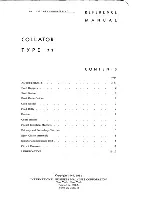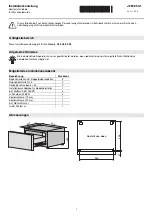
153
7.5 Disinfection
Sensor
Cleaning and Calibration
The frequency of cleaning for the disinfection sensors varies with each installation. The best way
to determine the frequency is to verify that the desired oxidizer concentration closely matches an
offline analysis (such as a DPD test). When the two readings differ by an amount that you deem to
be excessive then it time to clean and recalibrate the sensor. This should be every 2-3 months.
To clean the sensor, close the isolation valves to stop sample flow. Open the sample valve to
relieve the pressure in the manifold. Remove the nut that holds the sensor in place. Pull the sensor
straight up and out.
For loose coatings, wipe the membrane cap with a cloth, being careful not to damage it.
For removal of scale, dip in a dilute hydrochloric or sulfuric acid solution, and rinse.
For oils (including fingerprints!) wash with isopropyl alcohol. Do NOT use a detergent on the
chlorine sensor!
Reassemble all parts. Make sure that the sample valve is closed, open the isolation valves, and
inspect for leaks.
After cleaning, it is necessary to recalibrate the electrode. Refer to Section 6.7 for detailed
calibration instructions. If this membrane cleaning does not correct the accuracy, replace the
membrane cap as described in the sensor manual.
7.6
Replacing the Fuses
CAUTION
: Disconnect power to the controller before opening the front panel!
Locate the fuses on the relay interface board on the lower left side of the back of the controller
enclosure. See figure 5, Identification of Parts. Gently remove the old fuse from its retaining clip.
You can verify that the fuse has been blown by measuring continuity between the ends of the fuse
using an ohmmeter. If it is blown, discard. Press the new fuse into the clip, secure the front panel
of the controller, and return power to the unit.
Warning!
Use of non-approved fuses can affect product safety approvals. Specifications are
shown below. To ensure that UL/CSA product safety certifications are maintained, it is
recommended that a factory original fuse be used.
Fuse P/N
F1 Protects Power Input
102833
5 x 20 mm 1.6 amp
250 V
F3 Protects R1, R2, R3 and R4
relay outputs
102834
5 x 20 mm 6.3 amp
250 V
F2 Protects R5, R6, R7, and R8
relay outputs
102834
5 x 20 mm 6.3 amp
250 V
















































